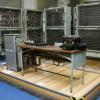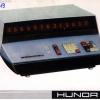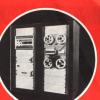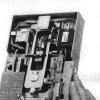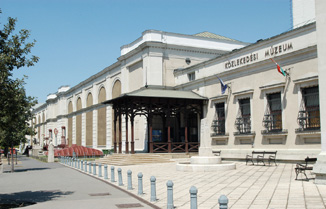The most popular Hungarian minicomputer: Videoton R-10 (catalogue)
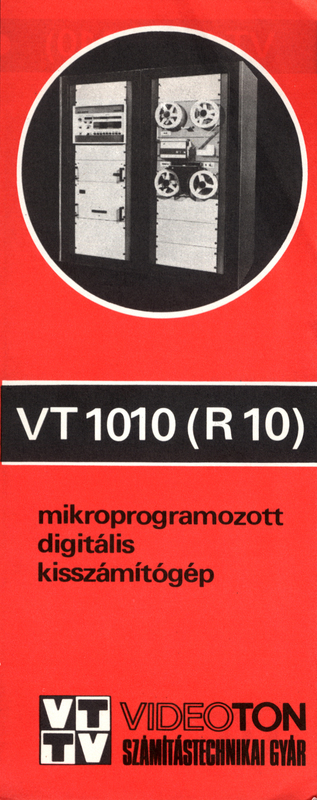
Description (English)
Leaflet for the R10 computer, showing integrated circuits
The Hungarian industry adopted the French MITRA-15 compact computer, and also based the the R-10 on a French licence. The development of the MITRA-15 had been followed closely by the Computer Science Coordination Institute from its very beginning in 1971, and whenever they travelled to France in subsequent years. Mass production of the R-10 (which was spread countrywide) started in the mid-1970s. Building up the R-10 as an on-line data-collecting system was very beneficial. The peripheral low-capacity was set to (Min. 4, max. 32 kilowords of 16-bit words) minicomputer of TTL circuits with display terminals, punch-card and pinched-tape units plus an 800 kilobyte SAGEM fixed disk and later even an 8“ floppy drive. It was a 16-bit machine, with a ROM-memory of 8 kilobytes. The R-10 (which was produced till the early 1980s) was introduced with great success in the Soviet Union and other COMECON-countries, as well. Being a small and (at that time) relatively cheap computer it functioned splendidly as a ’satellite‘ machine for the bigger machines of the Unitary Computer System. This machine made up a significant proportion of the over one thousand computers used in Hungary by the early 1980s.
On this page we provide metadata using the Dublin Core metadata format. The metadata is derived in most cases from metadata found in the source collection; in some cases we have added additional information where it was not available.






